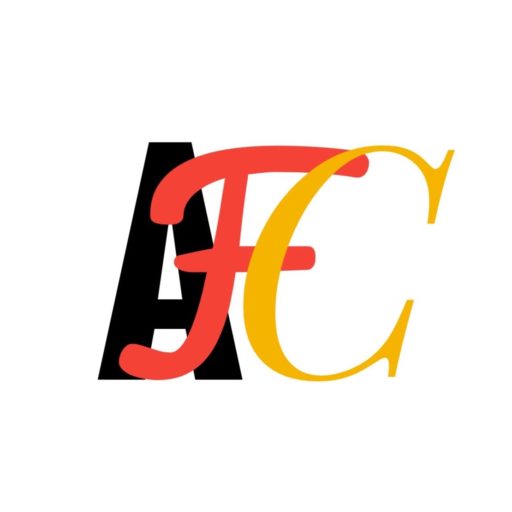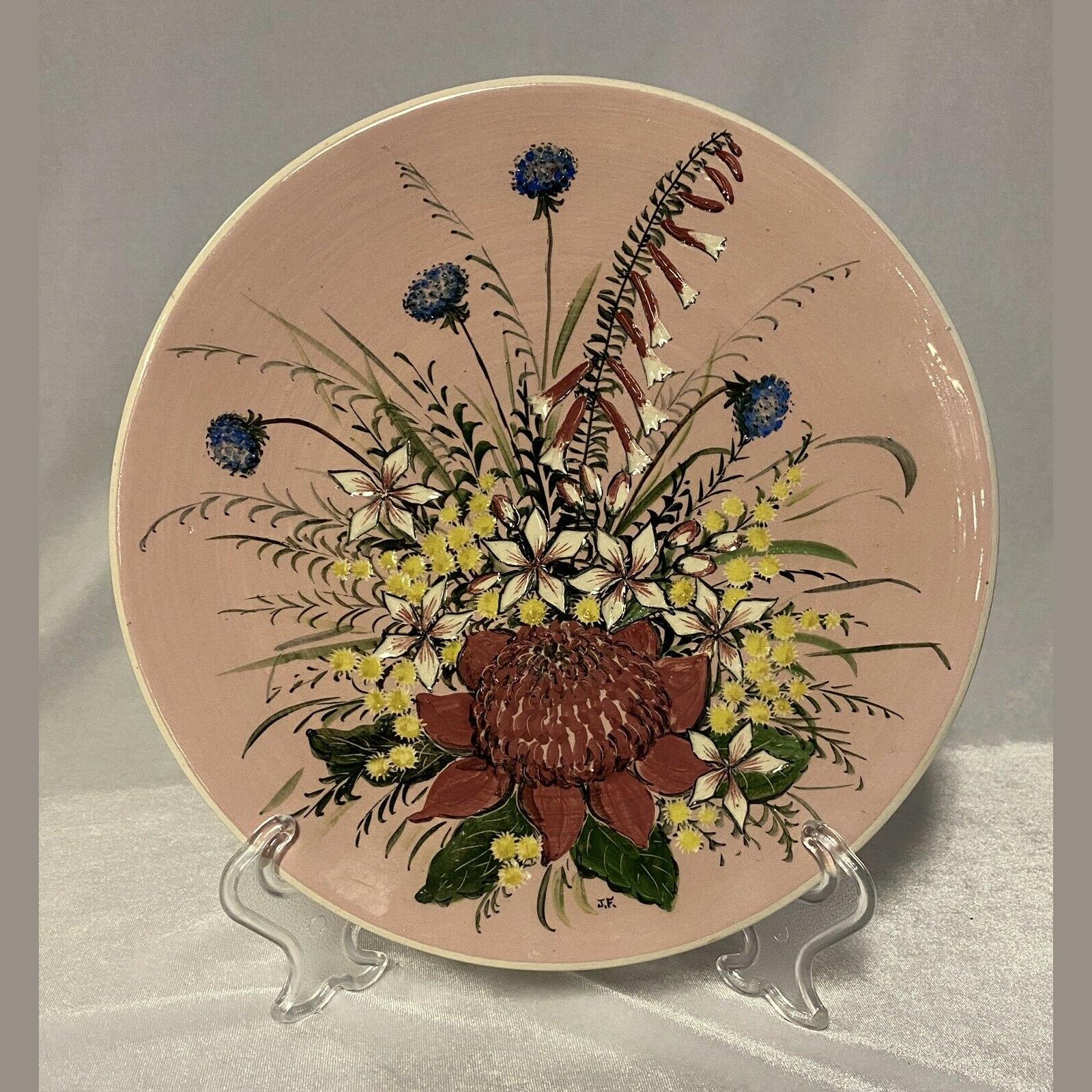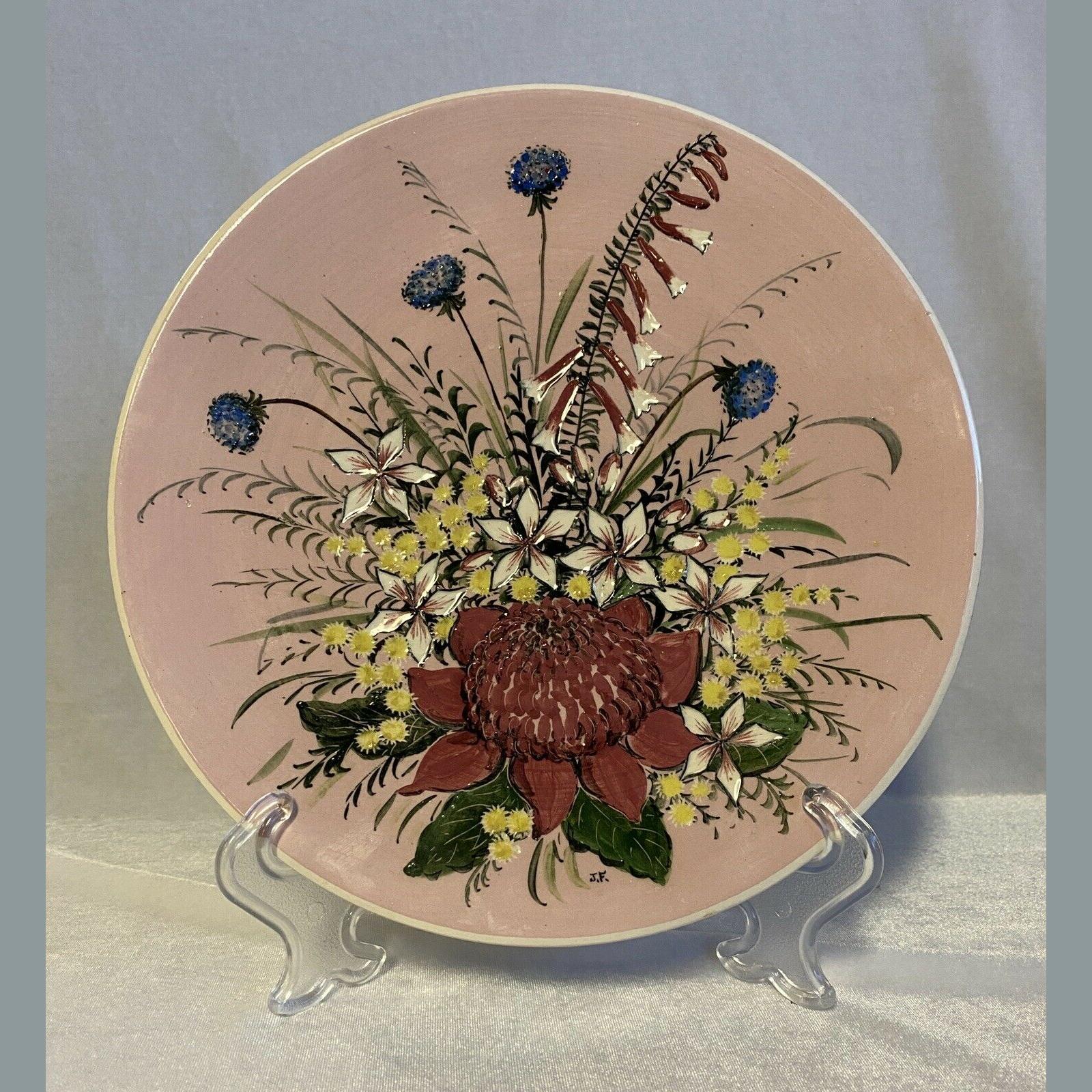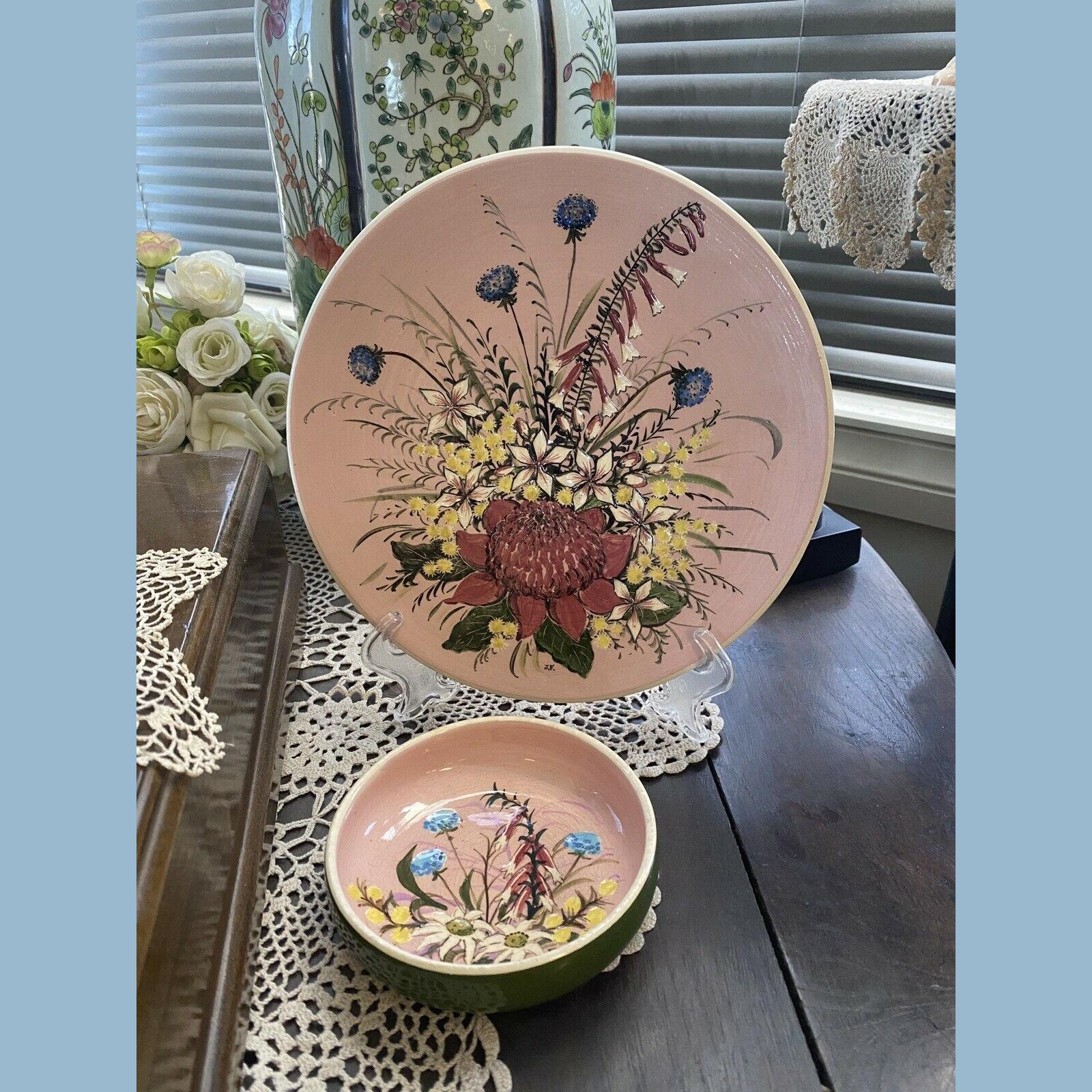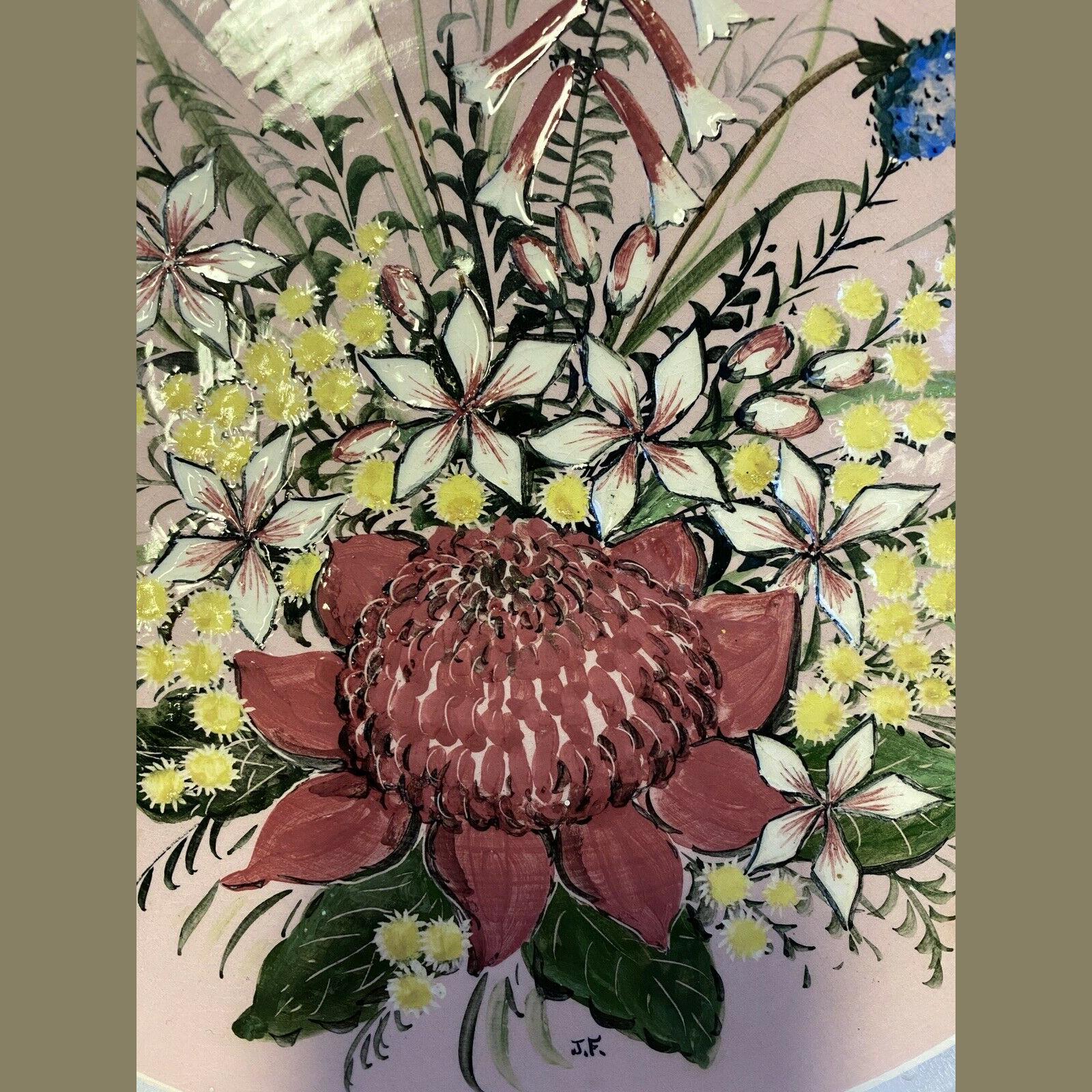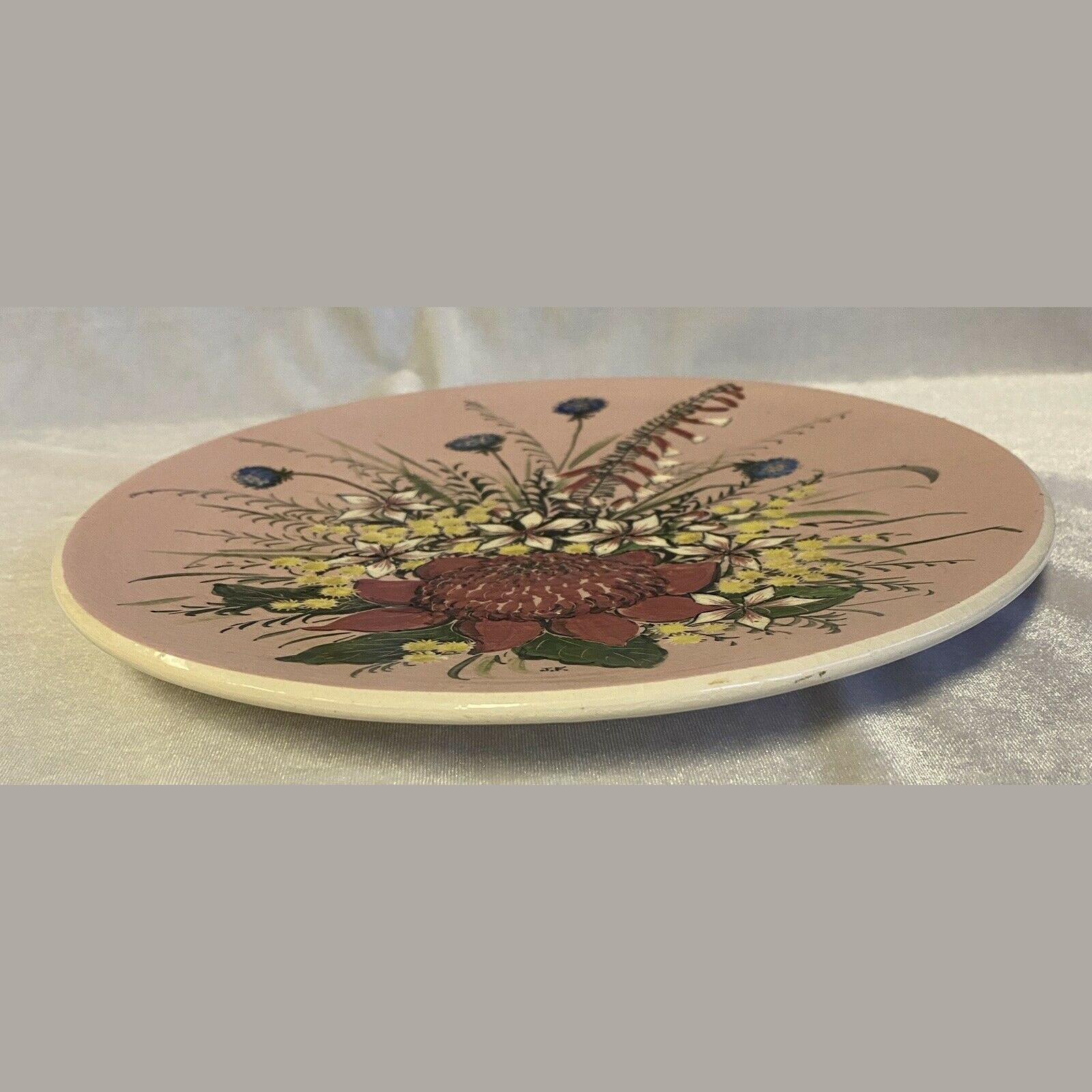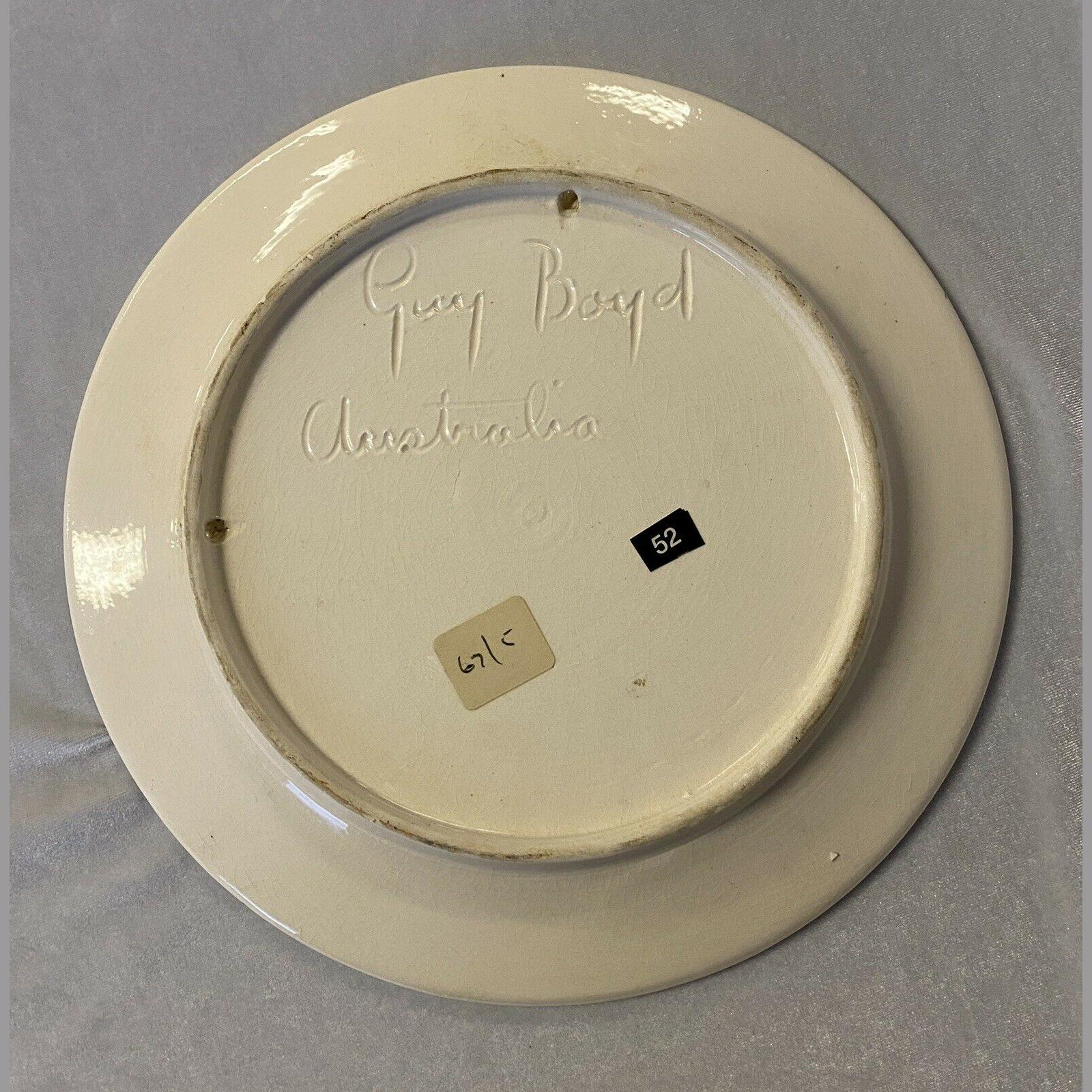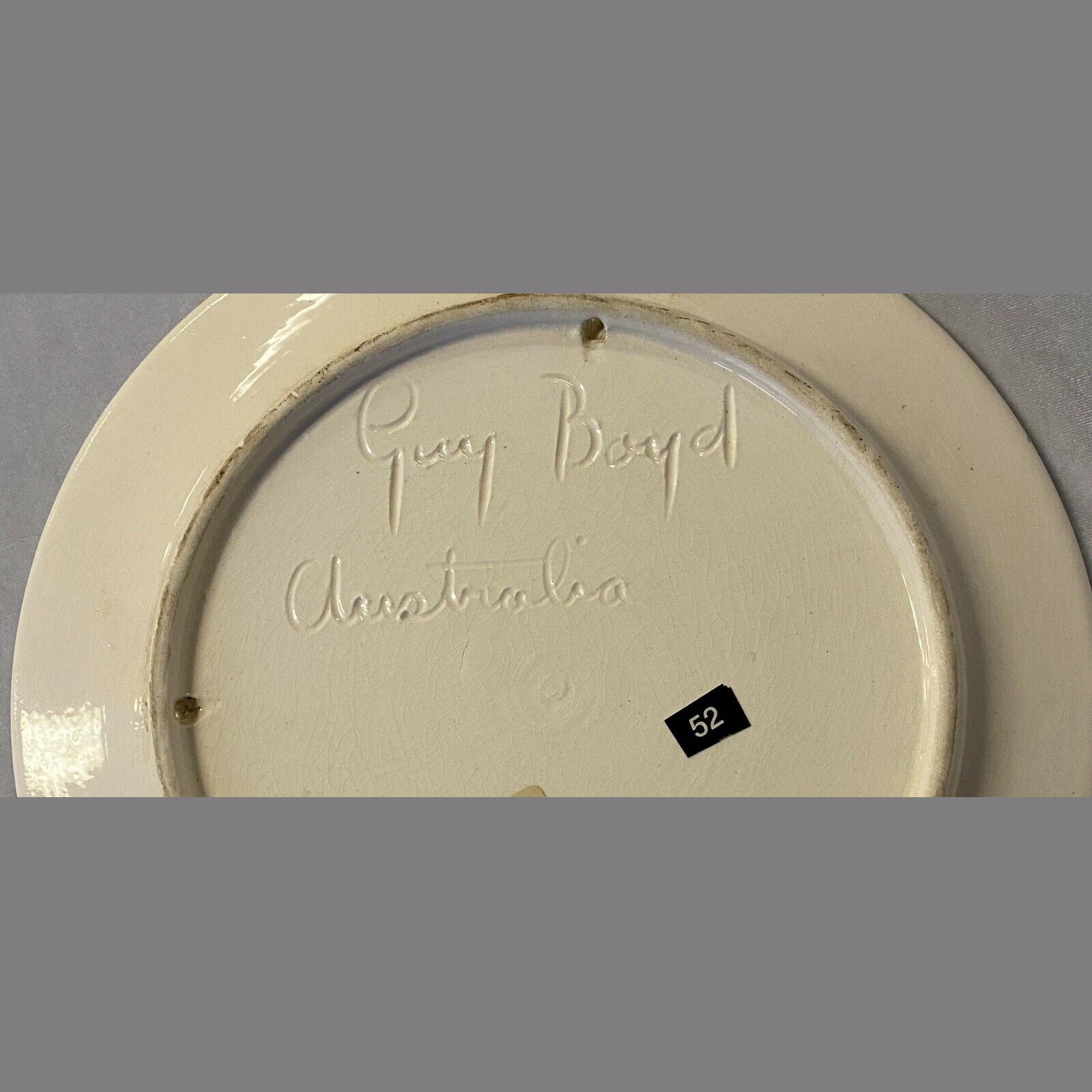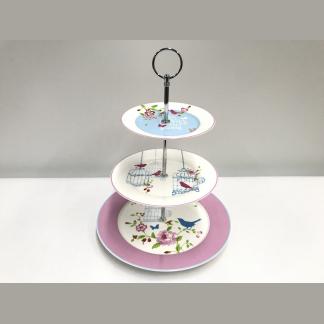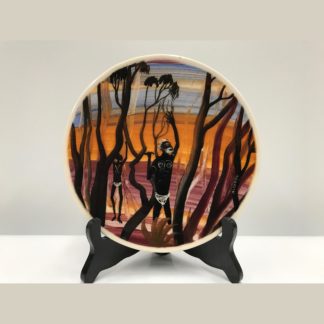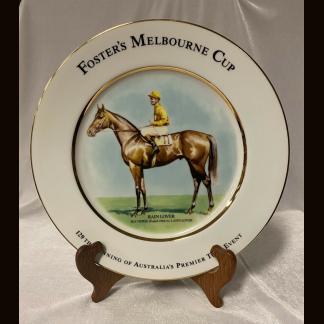Bio & Information
J Fraser Bio
(Joy or Jock) little is known about J Fraser except that Jock as well as Joy has been attributed to some pieces of Guy Boyd pottery – Joy is thought to have worked for Guy Boyd pottery alongside Helen Ilich – Helen Ilich is thought to have worked for or set up the Isobel Art Pottery studio in Croydon Victoria with some references to “Isobel Joy Fraser” as also the principle at Isobel Art Pottery.
Guy Martin à Beckett Boyd (1923 – 1988) Bio
Guy was born in Murrumbeena, Victoria, where he learnt to make pottery as a child in his father Merric Boyd’s studio. After serving as a corporal in the war, he trained as a sculptor at the East Sydney Technical College. In 1946, to help fund his studies, he set up the Martin Boyd Pottery in Cremorne with partners Norma and Leonard Flegg. In 1951, he sold his share of the pottery to Leonard’s brother Ronald and returned to Melbourne, setting up the Guy Boyd Pottery in Bentleigh in 1952. He and his wife Phyllis operated the pottery until 1964, when he sold it to devote himself full-time to sculpture. Work made at the Guy Boyd Pottery is incised ‘Guy Boyd’.
Guy Boyd was an Australian potter and figurative sculptor Born in Murrumbeena, Victoria, Guy was the third child of William Merric Boyd, potter, and his wife Doris Lucy Eleanor Bloomfield, née Gough, a painter, and thus was a member of the Boyd artist dynasty. Brother of Arthur and David, both painters, Lucy a potter, and Mary, a painter (who married first John Perceval, and then later Sidney Nolan, both artists), Guy learnt to make pottery as a child in his father Merric Boyd’s studio.
After the Great Depression followed by a disastrous fire at his father’s pottery, where he was assistant. In 1941-46 he served in the Australian Army Reserve, however as a committed pacifist he was deployed as a draughtsman in Melbourne and then at Fortuna mansion in Bendigo, before conflicts with his superiors resulted in his being posted interstate in 1944 to the 103rd Convalescent Depot, Ingleburn, where he volunteered to teach pottery to the patients. After World War 2, Boyd worked as a potter, establishing both Martin Boyd Pottery and later Guy Boyd Pottery. These studios mass-produced a wide range of modernist objects from housewares to decorative pieces which enjoyed strong commercial success. Iconic Australian imagery, particularly flora and indigenous motifs, feature frequently. This period of work is also steeped in the ‘atomic age’ aesthetics of the 1950s and early 1960s with a familiar colour palette and shapes that strongly echo Eames and others.
Boyd turned away from this commercial work and to a full-time career in sculpture in 1965 when he held his first solo show at Australian Galleries in Melbourne. His commissions include sculptures in both Melbourne and Sydney’s international airports, Caulfield Town Hall, the Commonwealth Bank and has pieces in the National Gallery of Victoria, Melbourne. He had exhibitions of his work in Australia, the United Kingdom, Canada, and the United States. In 1968 he won a Churchill Fellowship to study art overseas. He was recognised with a large format monograph, Guy Boyd written by gallerist Anne Von Bertouch and art historian Patrick Hutchins and published by Lansdowne Press. Later that year Guy and Phyllis migrated to Canada with their four younger children, settling in Toronto in 1976, but returned to live in Australia five years later. He was appointed the Art Advisor to Deakin University in 1988.
Boyd’s early sculptures and reliefs were mostly in terracotta and plaster. James Gleeson, writing in the Sun-Herald, Sydney in June 1966 provides insight into Boyd’s choice of sculptural medium during his transition from the ceramic industry, his method of working, and its influence on the forms he favoured Boyd’s technique is not merely original (for that in itself is not necessarily a virtue), it is original and entirely at one with the intention of the artist. He has perfected the ideal means for saying what he wants to say, so the originality of his technique is also artistically important. First stage in the transmutation of nature into art is a wax model. This is the creative stage when the soft wax must be thumbed into a work of art that is alive with the vibrancy of nature. The next stage is the plating of the model with silver or copper, but the usual process would smooth away the subtleties of surface modelling and destroy its vitality. So the wax effigy sits in its acid bath for weeks on end and a very low charge of electricity gradually deposits a paper thin layer of metal on its surface. The wax is chemically dissolved, the shell is strengthened on the inside and finally filled with a plastic stone that will neither expand nor contract to endanger the metal skin. Boyd also experimented with an electrolytic deposition of silver combined with a layer of copper but abandoned that after finding that applying heated carbon tetrachloride to dissolve the wax from the metal shell was affecting his health. Boyd discontinued the electroplating with powdered granite compound infill described above in 1966, and the majority of his mature work is fine-face bronze casts using the lost wax process, in which he innovated through the admixture of silicon with wax, with editions of usually six produced in bronze and aluminium. Often a thin finish in silver is applied over the bronze or aluminium cast, oxidised to near-black then burnished lightly to reveal texture in relief; his 1971 Aboriginal Legend of Flight, commissioned for Sydney Kingsford Smith International Airport arrivals gate, after an earlier version (1969) for Tullamarine Airport, is an example. It is five and a half metres in width, modelled in clay, cast in plaster and then sand-cast in aluminium in 27 sections, coated in sterling silver over nickel and copper layers, then oxidised before being bolted together and the joins concealed. It is displayed against a black Swedish marble wall. Of his working technique, art historian, art critic and curator Sasha Grishin noted that Boyd worked directly with his wax or clay, rather than through preparatory drawings, accepting the modelling and subtraction of material, and revelation of the unexpected, as crucial to the creative process.
Boyd adhered to figuration throughout his career, though he rarely worked directly from the model and preferred to rely on his memory of bodies in movement and of gestures. His subjects are mostly girls and women and for the earliest of his exhibitions of the 1960s he referred to record covers and magazine pictures of African dancers. Often figures are drawn from experience of his large family and observations of bathers at Brighton beach, with some groups of mother and child, or of lovers, along with a few portraits. Much of the work makes reference to mythology, particularly to stories of transformation.
Bernard Smith in 1965 noted that “Stance and gesture are caught lyrically and sensuously” by Boyd, and he admired the way “oxidised surfaces, burnished along the ridges, achieve a jewel-like beauty of texture.” Elwyn Lynn had a mixed reaction to Boyd’s early exhibition at Bonython’s Hungry Horse Gallery in a review in The Australian, June 4, 1966; “He is best in the silvery, blackened, self-contained pieces when the figure is preoccupied with some simple, inevitable gesture. Lapses are profound: one gauche bronze dancing girl must be destined for a suburban garden and a mother and child is embarrassing in execution and sentiment”, but goes on to admit “facile virtuosity is countered by breaking surfaces with light catching impressionist touches lissom yet awkward poses delight in their skill”
Reviewing one of Boyd’s last shows, at Beaver Galleries in Canberra, Sacha Grishin writing in The Canberra Times in 1987, contrasts the sculptor’s Boyd family inheritance of ‘figurative humanism’ against the prevailing abstract sculpture imitative of Anthony Caro. Describing Boyd as never having been a ‘fashionable sculptor’ he praises his avoidance of ‘slick’ realism and his concentration on the human figure as a ‘vehicle for communicating ideas’, his ability to convey beauty without ‘sentimentalism’ and to represent freedom in movement through ‘an exciting resolution of the arrangement of volumes within graceful floating lines.’
Professor Patrick Hutchings’ discussion of the sculpture in the 1979 monograph attributes Boyd’s fascination with transformation and change to his inheritance of a Boyd ‘clan style’, ‘a family theme, one of metamorphosis’, a motif evident in a 1948 two-handled pot by his father Merric, which Guy had kept.
A determined and natural leader, in 1967 Boyd founded and was President of the Brighton Foreshore Protection Committee; he was vocal in condemning inappropriate development and council corruption in the suburb, where he had settled after purchasing and restoring a house that was once his father’s, and advocated for councillors to be paid in order to attract candidates less compromised than those who were real estate agents and property developers. His campaigns resulted in the defeat of a proposal to build a marina at Brighton and the halting of a high-pressure oil pipeline that was to be extended by Esso and BHP under Port Phillip Bay. A plaque commemorating his achievements in preservation and conservation was later erected on the beach at Brighton.
After he and Phyllis Boyd were early involved in calls for a judicial inquiry into Lindy Chamberlain’s trial which resulted in a charge of the murder of her baby daughter, they were active in drawing up a petition entitled ‘A Plea for Mercy’. He became the Australian Co-ordinator of the effort and, in 1984, edited the book Justice in Jeopardy in Chamberlain’s defence. In 1983, as a member of the Tasmanian Wilderness Society, Boyd lobbied against the Tasmanian State Government’s plan to dam the Franklin River.
Boyd died 26 April 1988 from coronary atherosclerosis and was buried with Anglican rites in Brighton cemetery. His wife, Phyllis, and their five daughters and two sons, survived him. Critic Sasha Grishin, in marking Boyd’s passing, called him “one of our most significant post-war figurative sculptors”.
